
Ever curious about how we craft our tales? Or which anecdotes didn't quite make it into the final cut? Sign up for our newsletter for an exclusive look behind the scenes.
The frigid air is endless down here in the land of ocean and icebergs. The heavy gray clouds make it difficult to distinguish between night and day, while the whipping winds stir mountainous waves that crash overboard like an angry leviathan emerging from the depths below.
It’s here, in perhaps the most isolated spot on earth, where we find Dee Caffari, one of the most accomplished sailors of her era. She is alone, captaining her boat through the hostile waters of the Southern Ocean in a spot known as Point Nemo. The name is most certainly fitting. In Latin, Nemo translates into “no one.” And down here, the closest human you’ll find flies some 250 miles overhead in the International Space Station. The closest person on earth, well, they’re some 1,700 miles away in any direction — maybe to the north in the rugged cliffs of the Pitcairn Islands, or on the rocky terrain of Maher Island off Antarctica to the south, or perhaps on the volcanic mountain of Motu Niu of the Easter Islands to the northeast.
Point No One. Yes, that sums it up quite nicely.
It’s here where Mother Nature unleashes her fury as storms suddenly EXPLODE! thanks to the lack of landmass to impede their growth. It’s where waves can swell the size of small skyscrapers and winds can regularly push upwards of 70 mph. There’s a particularly wretched passage at the southernmost tip of South America and the northern tip of Antarctica. It’s a narrow slip where the Atlantic and Pacific oceans collide, and a continental shelf and strong winds whip up conditions that can scare the most experienced sailors.
What sane person would willingly travel these waters? Quite a few, in fact, with Dee Caffari considering herself a lucky one. For all the horrid conditions, there are equally beautiful sunsets where the evening sun sinks below the horizon and gives way to a fire-red sky, or the crystal-clear nights where you see the red illuminating from Mars.
“I think the Southern Ocean, psychologically, is a kind of Mecca for sailors. I’m really lucky because I’ve been down there quite a lot, and I love it,” Dee says. “It’s some of the best sailing. But you have to be respectful. You have to know where you are.”
Dee is covered in layers of wool and silk to stave off the cold, padded with waterproof jackets and gloves and boots and goggles to keep the stinging spray of the treacherous saltwater off of her dry skin. ’Cause down here in the land of nowhere, one of the worst things a sailor can face — beyond the risk of falling overboard, or capsizing, or maiming yourself — is saltwater sores that can fester and scab and pus and make an already miserable experience that much worse.
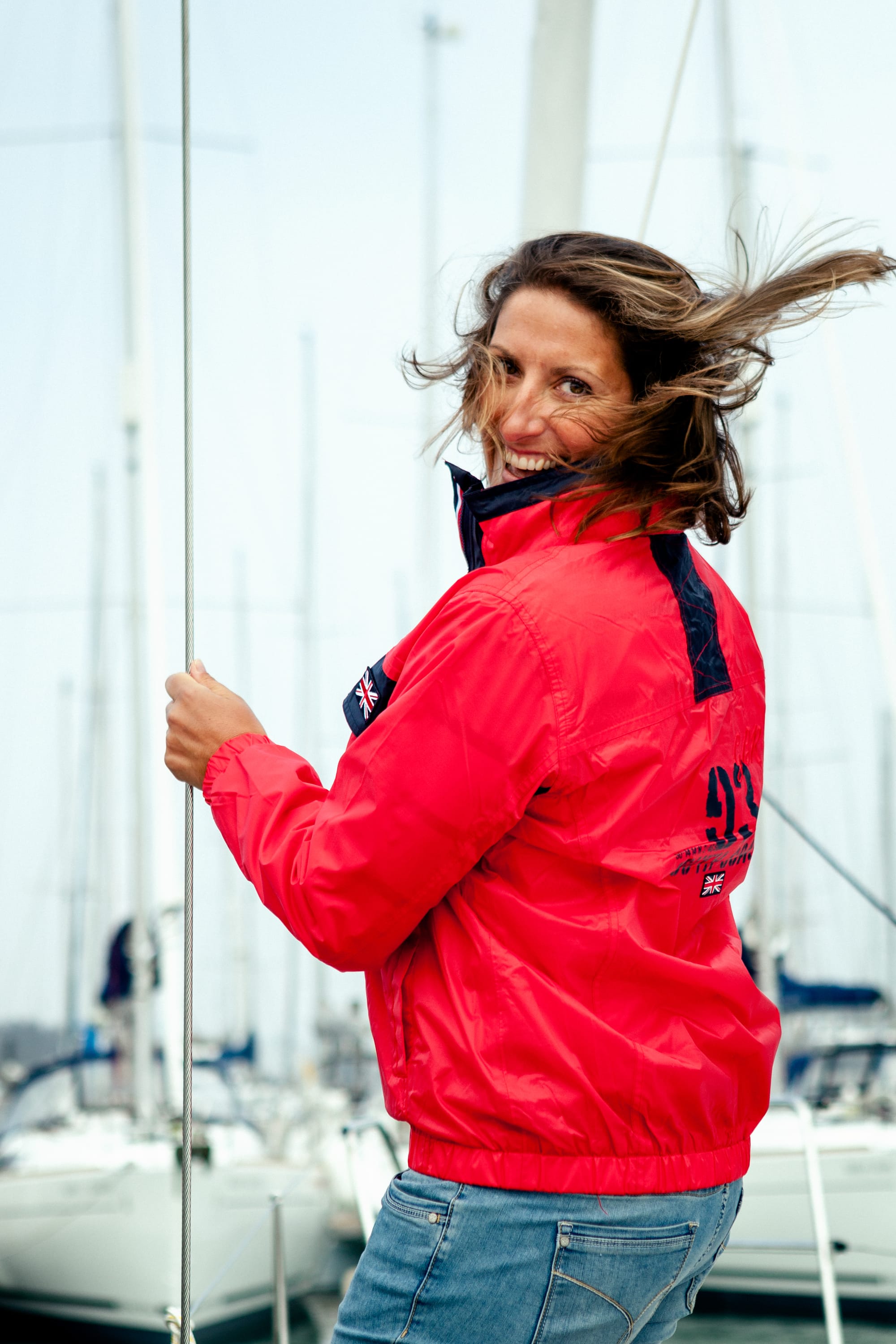
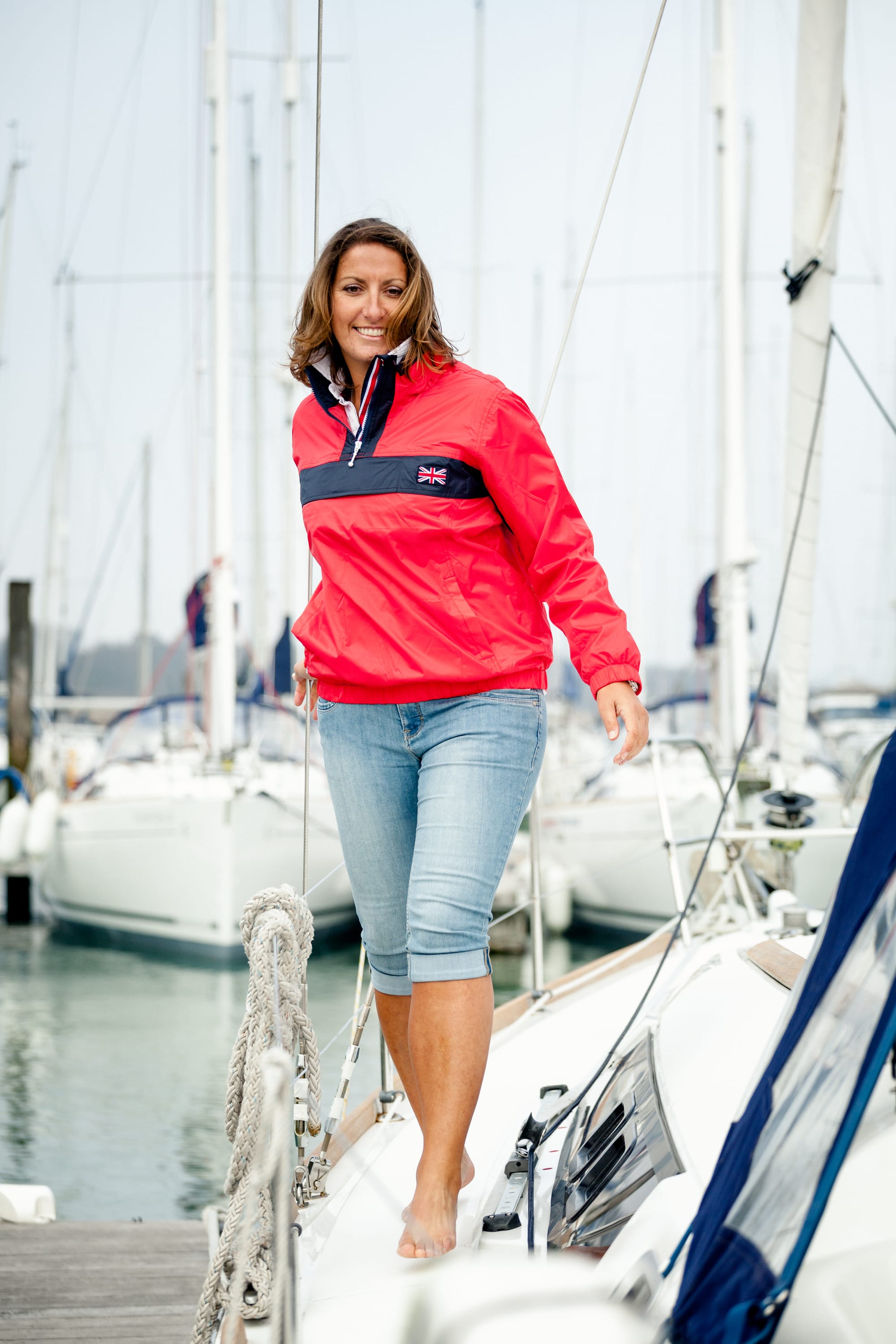
Alone against the elements: How Dee Caffari faced the fury of the Southern Ocean and emerged a legend. [Courtesy photos]
The gale-force winds send Dee’s 72-foot yacht lopsided, looking as if at any moment it will collapse into the frigid sea and drag her captain down with her. But Dee, a spry 32-year-old at this point, is in full control as she navigates the globe — all 29,000 miles — in the wrong direction. That is to say she’s traveling westward, against the earth’s winds and currents, in a journey to become the first woman in history to captain around the globe traveling the wrong way. She has a mentor, Sir Chay Blyth, to blame for the idea. Blyth was the first person ever to complete the “impossible voyage” in 1971. You know, he told her one day, it’s only a matter of time before a woman completes the journey. Why couldn’t it be you?
As a one-woman crew, Dee is in charge of maintaining the proper sails, monitoring the weather for incoming storms, strategizing the best route, keeping the electrical systems charged, performing daily checks to ensure everything is operating correctly — all while finding time to shower, sleep, and eat. Showers are often cold, sleep comes between passing storms, and food consists of dehydrated meals warmed in hot water. It’s similar to what the astronauts eat in the ISS overhead. Dee, for one, has taken a liking to rehydrated beef and potatoes or spaghetti bolognese throughout her many journeys. But nothing compares to the pizza and Diet Coke she’ll eat when she gets home. Food with texture — that’s one thing she always misses most.
This journey comes at a time when she’s still making a name for herself in this heavily male-dominated sport. It’s 2006, and she’s only six years into her sailing career. Yet she’s already accomplished so much, including one backwards-around-the-world trip. That came a year earlier when she captained a ship of twelve crew members who paid for their place on board. Some of them, Dee says, joined to find themselves, others to lose themselves, while others sought companionship. Whatever their reason, the crew departed on a 10-month voyage that was broken into stages with various stops in South America, New Zealand, South Africa, the U.S., and Europe. “You arrive, have a big party, forget how bad it is, and get on to the next leg,” Dee recalls.
It wasn’t long ago that Dee lived a much more — ah, what to call it? — standard life. She taught physical education while living a steady life with a steady paycheck in a steady career that could carry her to retirement. What’s not to love? Well, for one, normalcy never much appealed to Dee. She took to teaching right after graduating college with a sports science degree, where she spent years enjoying various outdoor activities: mountain climbing, skiing, and even getting her first real taste of sailing. Dee quite enjoyed teaching, but she couldn’t shake the feeling that there must be something more to life than the monotonous routine of work-home-weekends-work-home-weekends. Maybe it was her late father’s wisdom speaking to her subconscious: “Are you going to talk about it or are you going to do it?”
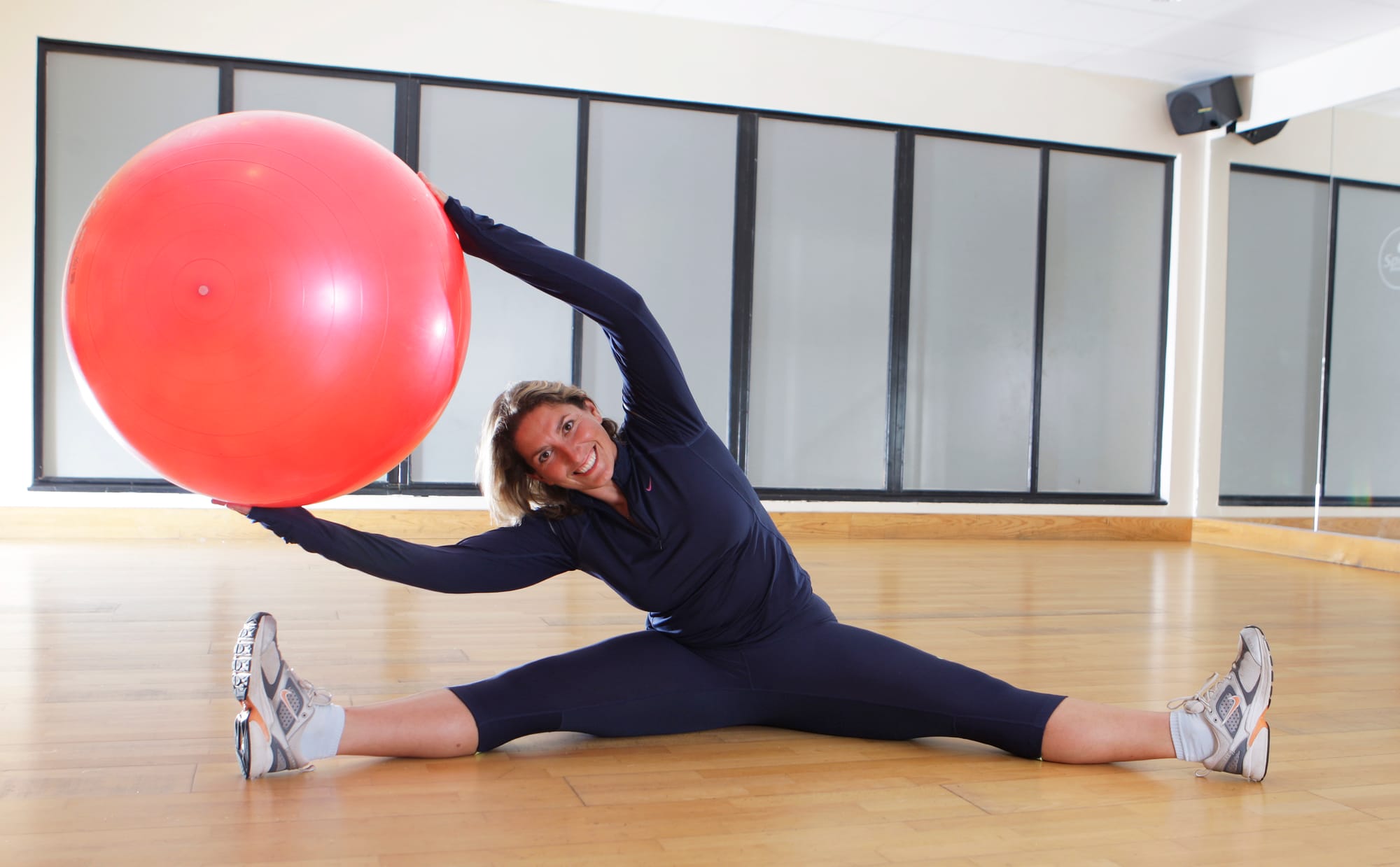
After a particularly rough two-year stretch where she lost her father and a mentor, Dee embarked on a vacation sailing and diving along the clear turquoise waters of East Africa. She spent weeks speaking to the boat’s captain and divemaster. How did they get into the industry? What opportunities are there for people looking to make a change? It’s there that Dee began to wonder if it was time for her own changes. After all, what did she have to lose? She had a stable career she could return to if her new path didn’t work out. She also had no family or children or love interest holding her back.
So, Dee did. Six months after her vacation, she embarked on a new life journey: sailing. She has always enjoyed the water, dating back to growing up landlocked just north of London. Her father owned a boat, and every weekend or holiday, Dee, dad, mom, and older sister jetted off to a local lake to spend a day cruising on the water. The eager Dee was always ready to drive and run the navigation, assist with engine checks and maintenance, learn to tie ropes, and help tow the boat out of the water at the end of the day. As much as Dee and her father enjoyed those days, Dee’s mother was “scared stiff of water.” Boating, rain, showers, baths, didn’t matter—her mother hated it. Dee isn’t quite sure why, but every weekend her mother joined them on board, knitting to pass the time and to block out her aquatic surroundings. “Maybe that’s who I get my tenacity and resilience from,” Dee says, thinking back today.
It's two traits that are key to completing an around-the-world trip alone. You must be tenacious in your understanding of every aspect of the boat. How do the electrical systems run? How do you and when do you replace your sails? How do you read the changing weather maps to prepare for incoming storms? What do you do when the wind calms and your boat sits still, a small dot in a gigantic water world? What to do when darkness falls and your boat sails into a minefield of icebergs?
Dee has spent three days navigating an ice-laden field in the Southern Ocean. Sure, it’s exciting at first. You snap photos of the large, frozen blocks and the penguins and wildlife that call them home and think, “Wow! Isn’t this cool!” But then the drowsy sun sinks to sleep, leaving behind a cloudy sky that blocks the nightlight of the moon and stars, as the sea temperatures drop, and you’re only left with the radar on your boat to navigate through the frozen mines. For three days, Dee was so stressed and anxious that she didn’t sleep. “I can’t do this anymore!” she cried during check-ins with her team.
The Southern Ocean is a world of extremes, and at this point of her journey, Dee has battled one extreme or another for more than 70 days. One day it’s icebergs. Another it’s a lightning strike that disables your boat’s wind instruments, forcing you to climb the 95-foot mast at a time when the weather suddenly shifts, just as your climbing gear gets stuck halfway up. You can’t scream for help because there’s no one around. And you can’t call anyone because you don’t have your phone. Your only chance for survival is to free yourself.
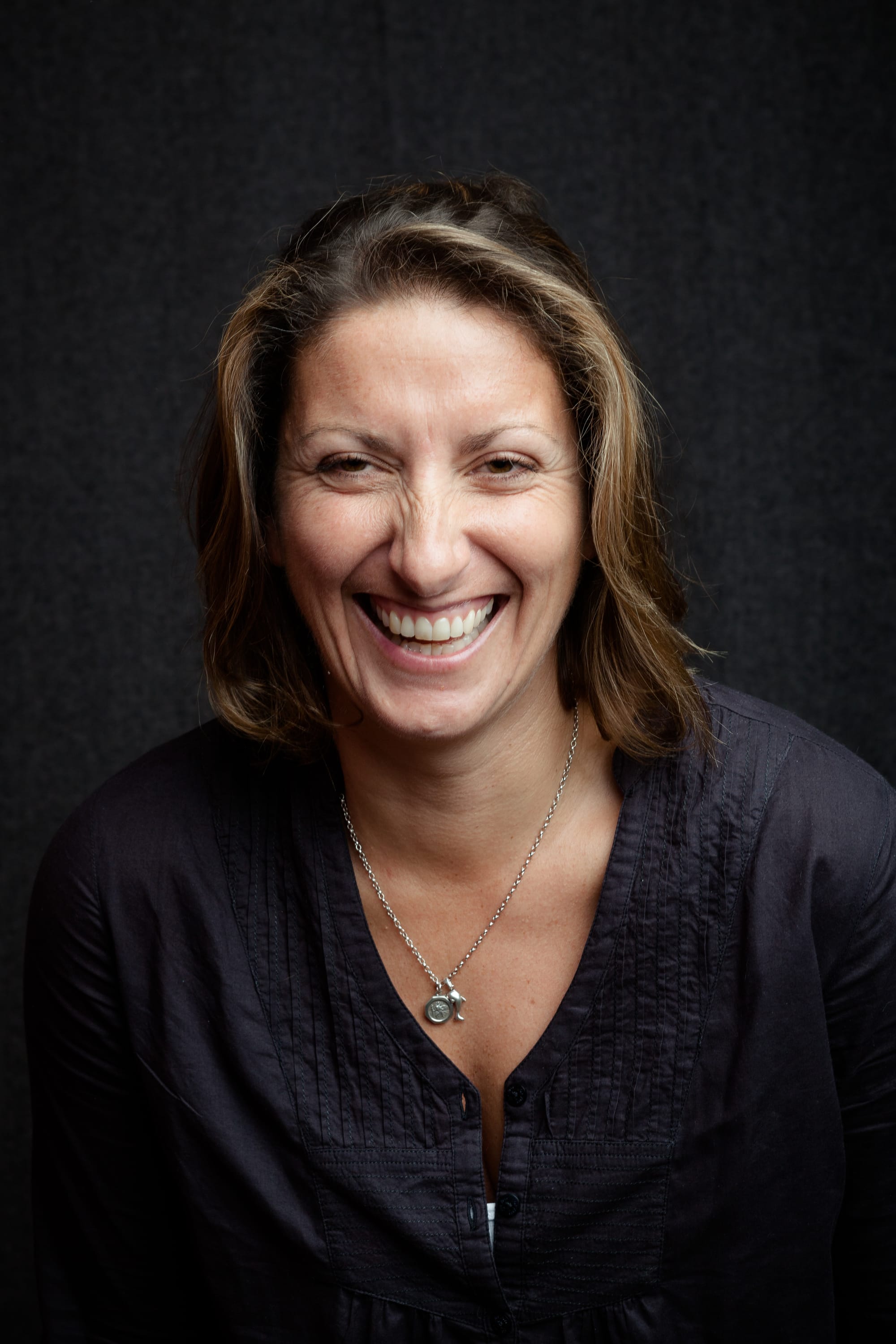
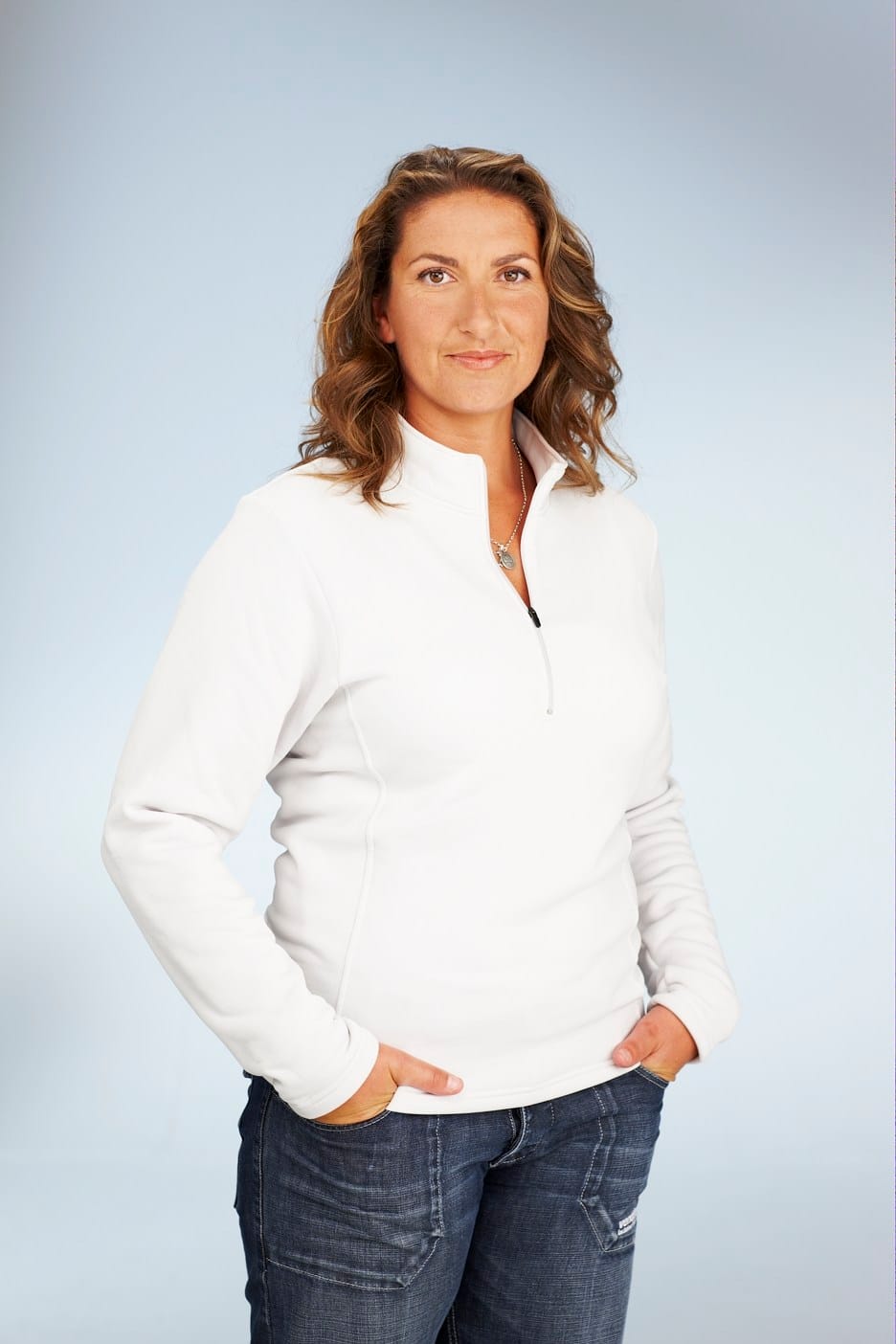
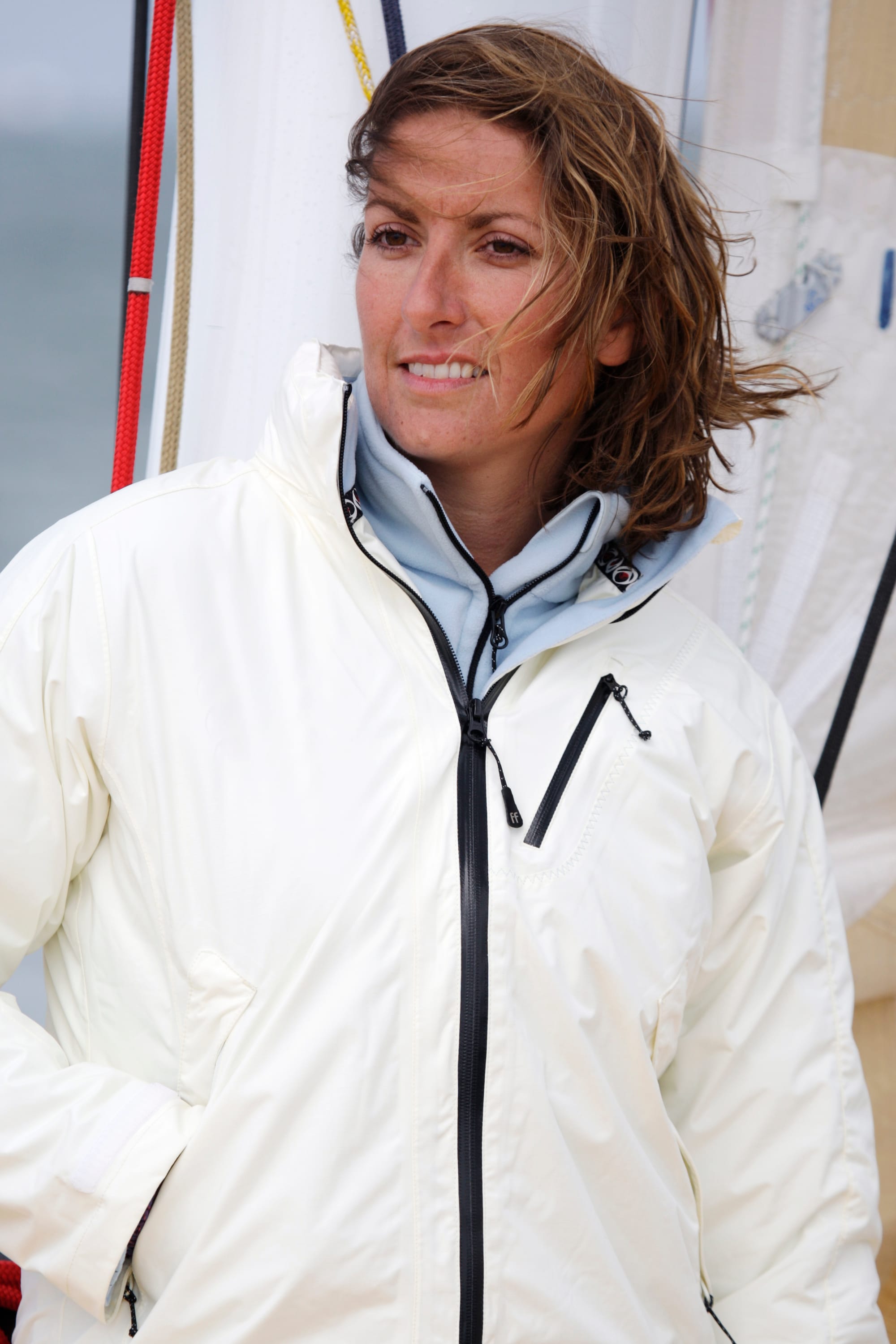
Sailing into the unknown: Dee Caffari's relentless pursuit of breaking records and barriers. [Courtesy photos]
‘In the middle of the ocean,” Dee says, “there is nowhere to go. You have to deal with it. And it is scary.’
After three stressful days of traversing through the icebergs, it’s as if Mother Nature presented Dee with a peace offering. The icebergs gave way to open ocean, the winds picked up, and a sunset exploded with a fire sky so full of vibrant reds and yellows and oranges that it burned all her stresses and anxiety away, and for the first time in days, she felt hopeful. “That moment was…that was when I knew I was going to finish,” Dee recalls.
After sailing more than 29,000 miles and spending 178 days at sea, Dee crossed the finish line in Southampton, England, on May 18, 2006. She became the first woman to sail around the world against prevailing winds and currents.
“When I crossed the line, I was overwhelmed with emotion. It was the proudest moment of my life and becoming the first woman to complete this voyage is a great honor,” Dee said at the time. “Now, I’m physically and mentally exhausted, but I don’t think I’ve ever been happier, and I can’t wait to celebrate the achievement surrounded by family and friends.”
Dee will forever be etched in sailing history as the first woman to complete the global wrong-way voyage, joining the likes of her mentor, Sir Chay Blyth, and Joshua Slocum, the first person to ever sail around the world back in 1898. She’s also the first woman to sail around the world non-stop three times and has been awarded the Member of the Order of the British Empire, a national recognition for her achievements at sea.
But it’s not one single trip that solidifies Dee as one of sailing’s greats. She’s long fought to prove herself in a sport that for decades has been dominated by white wealthy men, many of whom have sailed since they were boys. She’s fought against traditions and angry scowls as she’s stepped on yachts and proven time and again that she’s worthy of not only being on board but captaining the whole damn ship.
“I have been able to give younger girls the ability to see what is possible and helping them to become sailors,” she says. “If we can’t see it, then we can’t be it, and now I have the responsibility to help the next generation follow in my footsteps.”

Two years after completing her solo voyage, Dee joined the vaunted Vendée Globe race, a solo, non-stop competition around the world that is known as the Mt. Everest of the seas. Dee was one of two female captains in the race, joining fellow countrywoman Samantha Davies of Great Britain. Not only would she be sailing around the world again—the right way this time, eastward, with the winds and currents—but she would be racing 30 other boats. This lap, wasn’t about just finishing the journey, but how quickly can you do it.
The route began as a familiar one, except when reaching the South Atlantic, Dee turned east towards South Africa and the Indian Ocean rather than west toward South America. She then traveled south of Australia, into the Southern Ocean and past Point Nemo, through the horrid narrow passage at Cape Horn, and turned north back into the Atlantic Ocean and the final stretch to the finish line.
Dee was one of eleven to finish the race, including Davies, after traveling nearly 28,000 miles in 99 days. She became the first woman in history to circumnavigate the globe in both directions.
Through each lap around the world, Dee has witnessed sights that many people will never see firsthand. Penguins standing on icebergs. Starry nights unincumbered by any artificial light as blinking satellites soar across the sky. And, too, the real effects of humans on our earth’s changing climate.
She embraces the subject when asked, uninterested in the opinions of bickering politicians arguing its effects. She’s been there. Seen it. The proof is all too real when out at sea.
“In the 20 years I’ve been sailing around the world, the weather patterns we’re accustomed to are changing, the ice is definitely moving,” she says.
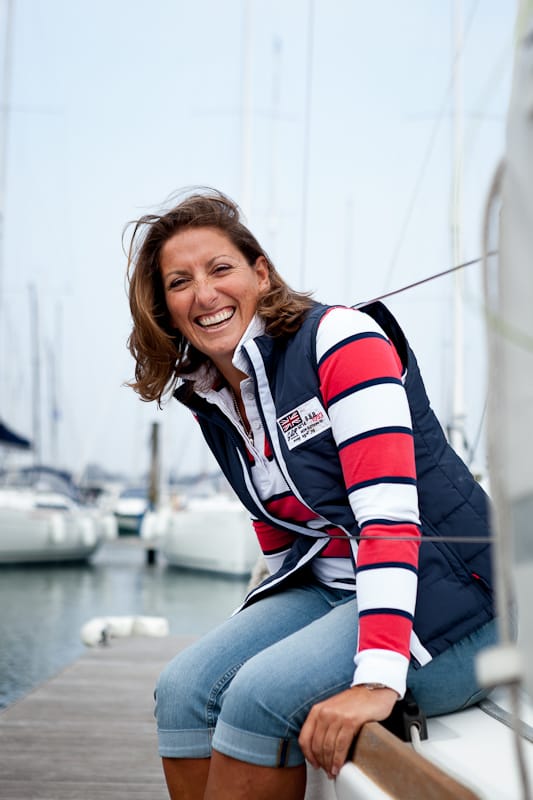
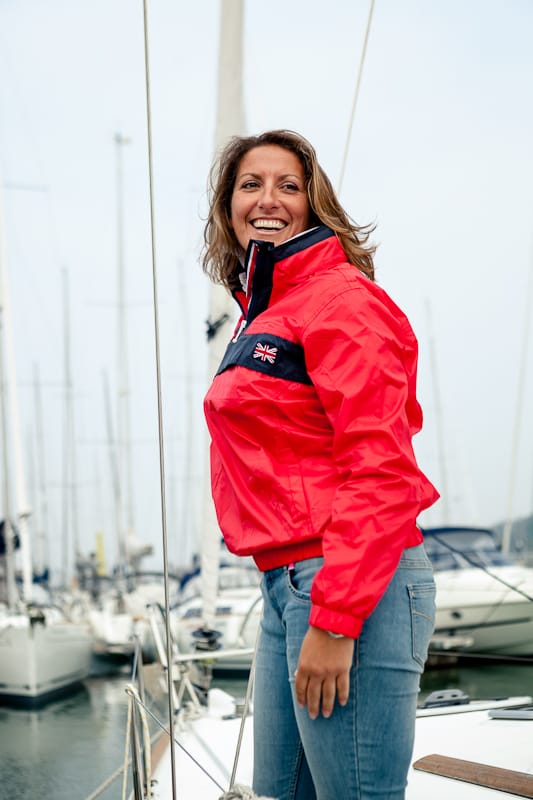
With six global circumnavigations under her belt and the horizon ever calling, Dee Caffari's legacy is defined by her unyielding determination and passion for the sea. [Courtesy photos]
During her solo voyage in 2006, Dee collected water samples from across the world. Tests later revealed that microplastics were found in every sample, including those taken in the most isolated areas of the Southern Ocean. Those microplastics mainly come from one of five “garbage patches” that litter the earth’s oceans. Plastics that find their way into the ocean eventually get caught in the currents and convene in these areas, where millions of pounds span thousands of miles. Because plastic is non-biodegradable, it breaks down into smaller pieces rather than disintegrates, allowing those fragments to spread throughout the oceans.
In 2017, Dee again set sail around the world in the Volvo Ocean Race, leading a young team called Turn the Tide on Plastic that’s mission was to raise awareness on ocean health and sustainability.
“Now we’ve got to put that connection in for education, because somebody in the middle of a country that’s nowhere near the sea is thinking, ‘Well, it’s not my problem, it doesn’t affect me, it’s coastal communities and people at sea,’” Dee says. “But we have to get them to understand that what rubbish goes down their drains filters through into systems that end up at sea. All of us are intrinsically linked, and all of our actions have an impact.”
For all that Dee has accomplished, she’s showing no signs of slowing down. There’s still much to learn, skills to develop, areas to improve. As she likes to say, each lap is an evolution that’s improved her skills and made her a better sailor.
Today, she’s planning her seventh trip around the world, scheduled to set sail in the winter of 2025. She’ll be co-captaining an all-woman crew with The Famous Project in an attempt to break the world record for the fastest trip, and the exclusive rights to the Jules Verne Trophy. The award is named after the French novelist who authored the fictional tale Around the World in 80 Days. The current record is held by Francis Joyon, a French yachtsman who completed the voyage in 40 days, 23 hours, 30 minutes, and 30 seconds.
If there was ever a captain to take a team sailing around the world — one trying to beat an all-time record, no less — you’d be hard-pressed to find one more suited than Dee Caffari. Those close to her rave about her meticulous preparation and research that goes into each journey.
“She doesn’t go into anything half-hearted,” says Harry Spedding, her partner of 18 years. “Dee, if she’s given an opportunity, she’s absolutely focused on it.”
The Famous Project is “probably the one I’ve seen her most excited about,” Spedding adds, “because it’s a project where she can see a bigger picture and a way to again give back to the community.”
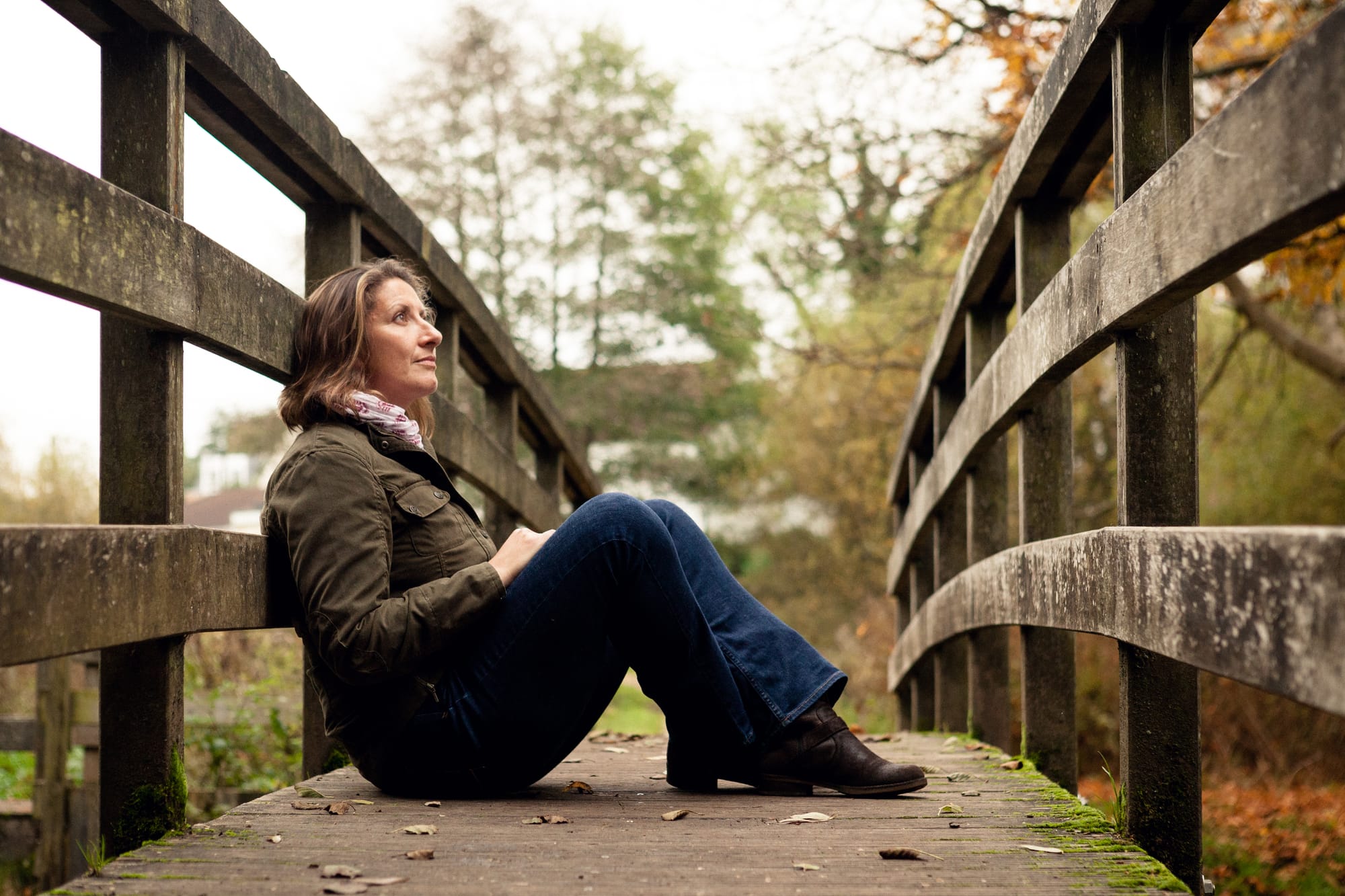
The Famous Project crew is well underway with its training — sailing across the earth doesn’t happen overnight. The team is competing in various shorter races to build camaraderie on the boat, but it’s away from the water where Dee says the team bonds best. Take a recent skiing trip where no one was quite as comfortable, yet it was another lesson in their journey of how to communicate and respond when things go awry.
“It was really powerful. The sailing is really important to trust each other and trust how to get the best out of the boat, but we’re all comfortable in a sailing environment, so it’s easy to hide some things,” Dee says. “Whereas as soon as you put people outside of their comfort zone, the polish falls off and the sharp edges stick out a little more and it’s easier to see the characteristics of people.”
It's been more than two decades since Dee stepped out of her own comfort zone, leaving behind the stability of a normal life and stepping into the unknown world of sailing. She’s accomplished more than she ever dreamed. So long ago it seems she was unsure if she would ever sail around the world once.
“I feel lucky to have done it six times and still be involved and doing it on a high level,” she says. “I genuinely love being out there, and I think that’s half the battle.”
It’s that love that will once again take her back to the land of ocean and icebergs, whipping winds and monstrous waves, and fire-burning sunsets that always seem to take her breath away.
Advertising and sponsorship opportunities are available. Contact Jim Hoos at jhoos@r1s1sports.com or 602-525-1363.